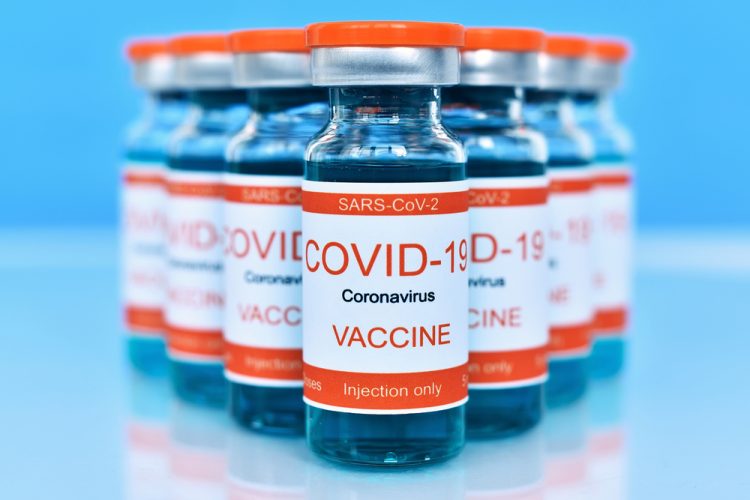AstraZeneca’s COVID-19 vaccines listed for emergency use by WHO
Posted: 17 February 2021 | Hannah Balfour (European Pharmaceutical Review) | No comments yet
The Emergency Use Listing will allow doses of the COVID-19 vaccines to be distributed through COVAX, the WHO’s vaccine allocation facility.


The World Health Organization (WHO) has listed two versions of the AstraZeneca/Oxford COVID-19 vaccine for emergency use. The Emergency Use Listing (EUL) means the vaccines can now be rolled out globally through COVAX.
The two listed vaccines are:
- COVID-19 Vaccine (ChAdOx1-S [recombinant]), produced by AstraZeneca/SKBio (Republic of Korea); and
- COVID-19 Vaccine (ChAdOx1-S [recombinant]) – COVISHIELD™, manufactured by the Serum Institute of India Pvt Ltd.
WHO’s Emergency Use Listing (EUL) assesses the quality, safety and efficacy of COVID-19 vaccines and is a prerequisite for COVAX Facility vaccine supply. It also allows countries to expedite their own regulatory approval to import and administer COVID-19 vaccines.
“Countries with no access to vaccines to date will finally be able to start vaccinating their health workers and populations at risk, contributing to the COVAX Facility’s goal of equitable vaccine distribution. But we must keep up the pressure to meet the needs of priority populations everywhere and facilitate global access. To do that, we need two things – a scale-up of manufacturing capacity, and developers’ early submission of their vaccines for WHO review,” stated Dr Mariângela Simão, WHO Assistant-Director General for Access to Medicines and Health Products.
Within the EUL process for the two AstraZeneca/Oxford vaccines, WHO assessed the quality, safety and efficacy data, risk management plans and programmatic suitability, such as cold chain requirements. The process took under four weeks.
The WHO’s Strategic Advisory Group of Experts on Immunization (SAGE), which makes recommendations for vaccines’ use in populations (ie, recommended age groups, intervals between shots, advice for specific groups such as pregnant and lactating women) has recommended the vaccine for those aged 18 years and above.
The AstraZeneca/Oxford product is a viral vectored vaccine called ChAdOx1-S [recombinant]. ChAdOx1-S has been found to have 63.09 percent efficacy and is suitable for low- and middle-income countries due to easy storage requirements.
WHO emergency use listing
The EUL procedure assesses the suitability of novel health products during public health emergencies. The objective is to make medicines, vaccines and diagnostics available as rapidly as possible, while adhering to stringent criteria of safety, efficacy and quality. The assessment weighs the threat posed by the emergency as well as the benefit that would accrue from the use of the product against any potential risks.
The EUL pathway involves a rigorous assessment of late Phase II and III clinical trial data as well as substantial additional data on safety, efficacy, quality and a risk management plan.
As part of the EUL process, the company producing the vaccine must also commit to continue to generate data to enable full licensure and WHO prequalification of the vaccine. The WHO prequalification process will assess additional clinical data generated from vaccine trials and deployment on a rolling basis to ensure the vaccine meets the necessary standards of quality, safety and efficacy for broader availability.
WHO also listed the Pfizer/BioNTech vaccine for emergency use on 31 December 2020.
In response to the EULs, COVAX said it will now complete the process of final Q1/Q2 allocations of the AstraZeneca/Oxford vaccine to Facility participants. Information on these final allocations will be communicated to all participants and published online the week of the 22 February.
For doses to be delivered via this first allocation round, several critical pieces must be in place:
- All Facility participants must have given national regulatory authorisation for the vaccines.
- They must also have signed indemnity agreements with the vaccines’ manufacturers.
- Countries eligible for financial support through the COVAX Advance Market Commitment (AMC) must have submitted National Deployment and Vaccination Plans (NDVPs) through the COVID-19 Partners Platform, that have then been reviewed and validated by COVAX.
As participants fulfil the above criteria and finalise readiness preparations, COVAX said it will issue purchase orders to the manufacturer and ship and deliver doses via an iterative process. This means deliveries for this first round of allocation will take place on a rolling basis and in tranches.
Due to the scale of the roll-out, the capacity of supplier and freight forwarders will be under considerable pressure and shipment timelines will be impacted by logistical preparedness and delivery lead times.
Based on this, COVAX anticipates the bulk of the first round of deliveries taking place in March, with some early shipments to those that have already fulfilled the above criteria occurring in late February. COVAX said more information on these deliveries will be shared soon.
Related topics
Distribution & Logistics, Immunisation, Regulation & Legislation, Vaccines, Viruses
Related organisations
AstraZeneca, COVAX, Serum Institute of India (SII), World Health Organization (WHO)









